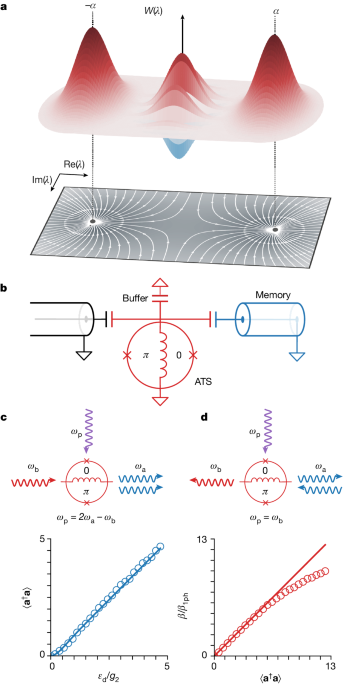Superconducting Circuit Experiment Demonstrates Quantum Control of Inherently Protected Cat Qubit with Exceptional Bit-Flip Resilience
This article describes a superconducting circuit experiment that implements a quantum cat qubit with unprecedented bit-flip resilience. Quantum bits (qubits) are prone to various types of errors, including bit-flips, due to uncontrolled interactions with their environment. Common error correction strategies rely on complex hardware architectures, which can be resource-intensive.
An alternative approach is to engineer qubits that are inherently protected against certain types of errors, such as bit-flips. One such qubit is the "cat qubit", which is encoded in the metastable states of a quantum dynamical system. This provides continuous and autonomous protection against bit-flip errors.
In this experiment, the researchers implemented a cat qubit in a superconducting circuit and achieved bit-flip times exceeding 10 seconds, an improvement of four orders of magnitude over previous cat qubit implementations. They were able to prepare and image quantum superposition states, and measure phase-flip times greater than 490 nanoseconds. Crucially, they demonstrated the ability to control the phase of these quantum superpositions without breaking the bit-flip protection.
This experiment is a significant milestone, as it shows the compatibility of quantum control and inherent bit-flip protection in cat qubits, paving the way for their use in practical quantum technologies.
Customize Summary
Rewrite with AI
Generate Citations
Translate Source
To Another Language
Generate MindMap
from source content
Visit Source
www.nature.com
Quantum control of a cat qubit with bit-flip times exceeding ten seconds - Nature
Key Insights Distilled From
by U. R... at www.nature.com 05-06-2024
https://www.nature.com/articles/s41586-024-07294-3
Deeper Inquiries
